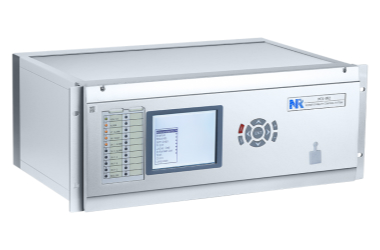HOME PRODUCTS Protection,Automation & Control Stability Control System
-
SERVICES
 NEWS
NEWS  EVENT CALENDOR
EVENT CALENDOR  CONTACT US
CONTACT US 
-
PCS-992 Power Stability Control System
Blackouts may seriously impact the daily life of modern society from economic sector to daily routine. Furthermore, power stability is particularly critical in important institutions, such as hospitals, underground mines, gas stations, sewage treatment plants, etc. NR Electric provides well-proven power stability control solutions to improve the power system’s stability and significantly reduce blackouts.
The Power Stability Control System (PSCS) provides a system- level solution for the whole power grid. Different from other System Protection Schemes (SPS), the PSCS is based on instability prediction instead of instability measurement. Before the installation, the tactic table is designed according to pre- determined and simulated stability studies and strategy analysis. After installation, PSCS acquires all the necessary real-time data from the substations or power plants and seeks the appropriate remedy actions in the tactic table to pull the power system back to a stable state BEFORE the system goes into an unstable state. In contrast, conventional SPSs only detect the system’s parameters and take actions AFTER the system enters an unstable state.
The Power Stability Control System (PSCS) is used to effectively prevent and reduce the possibility of system oscillations. Imbalance between loads and generations can result in system frequency and voltage changes and could potentially lead to system collapse. Power stability control can quickly restore the system’s balance by load shedding or generator shut down based on the preset control tactics. Therefore, bring voltage and frequency back to an acceptable value, so as to minimize the affected area and avoid cascading instability
A Power Stability Control System (PSCS) is composed of several master stations, multiple sub-stations and execution stations. Communication between the master station and the sub-stations is implemented via optical fibers.

- Architecture Stability Controller Central Unit at Master Station Bay Units at Master Station Central Unit at Sub-Station Bay Units at Sub-Master Station Central Unit at Execution Station Bay Units at Execution Station
-
Master Station Functions
Calculate region-scale control tactic tables
Transmit data to Execution Stations & Master Stations
Acquire data and drive control outputs
Sub-Master Station Functions
Calculate region-scale control tactic tables
Transmit data to Execution Stations & Master Stations
Acquire data and drive control outputs
Execution Station Functions
Calculate local-scale control tactic tables
Transmit data to Sub-Station
Acquire data and execute tripping or close commands
The selection of master station, sub-stations and execution stations is determined according to system’s actual operating conditions. The master station may either be a key power plant or an important transmission substation. Other transmission substations are selected as sub- stations, and other power plants are selected as execution stations.
Detect the operation conditions of outgoing lines, transformers and generators.
Transmit status information from one station to another.
Automatically identify the on-line operating mode of the grid.
Discriminate the fault types of outgoing lines, transformers or busbars.
Calculate the best control strategy using stability analysis according to power flow and fault type.
Determine measurements that should be taken, e.g. generators shutdown, load shedding, separating, modulating of DC power, quickly reducing output of generators, etc.
Real-time control measures will be taken in case of incidents related to frequency or voltage stability, overload, etc.; which are independent of the current network operating mode.
Select the units to be shutdown in a reasonable manner according to pre-defined specific requirements.
Control commands, control values, etc.; are transmitted to other stations to be performed via a communication network.
Control commands received from the master station or other stations will be performed after local discriminations and confirmations are made.
Remote monitoring and remote modification of settings.
GPS clock synchronization.
Self-checking, abnormality alarm, automatic display, printing, etc.
Communicate with central units in other master stations.
Receive discrimination results from local bay units.
Discriminate system operation mode.
Establish power transfer limits.
Implement stability control tactics.
Acquire and calculate data.
Discriminate line transformer and generator operating status.
Discriminate faulty line transformer, generator, busbar and fault types.
Execute commands received from local central unit.
Communicate with central units in master station and execution station.
Receive discrimination results from local sub-stations.
Implement stability control tactics.
Acquire and calculate data.
Discriminate line transformer and generator operating status.
Discriminate faulty line transformer, generator, busbar and fault types.
Execute commands received from local central unit.
Communicate with central unit in sub- station.
Receive discrimination results from local bay units.
Implement stability control tactics.
Acquire and calculate data.
Discriminate line transformer and generator operating status.
Discriminate faulty line transformer, generator, busbar and fault types.
Execute commands received from local central unit.